16 Vedic Maths Sutras:- English Translation and Mathematical Meaning
16 Vedic Maths Sutras:- English Translation and Mathematical Meaning
I used to spend ages on calculations (not legit but I ifykyk), but with Vedic Maths, I now solve them in a snap! If you’re like me, you’ve probably struggled with long calculations. But trust me, Vedic Maths makes it feel like magic!
Mathematics—some students love it, while others find it daunting. But no matter how we feel about it, one fact remains: math is a fundamental part of our lives. From solving everyday problems to excelling in academic subjects like science and engineering, mathematical skills are indispensable. One of the most fascinating yet lesser-known branches of mathematics is Vedic Mathematics—an ancient Indian system that simplifies complex calculations and enhances problem-solving abilities.
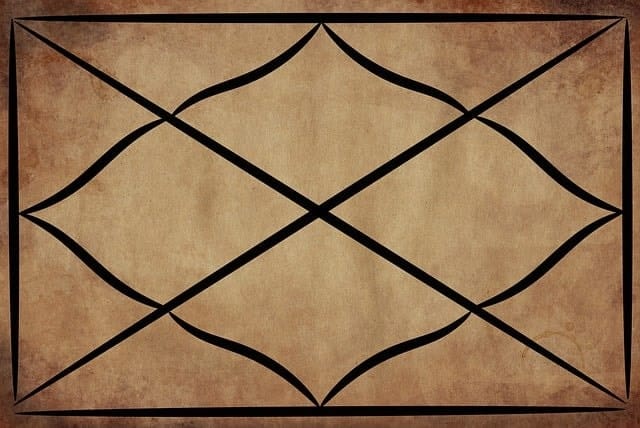
Vedic Mathematics is gaining popularity for its efficiency, speed, and intuitive techniques. But what exactly is it? Where did it originate? And how is it shaping modern mathematical education? Let’s explore the incredible world of Vedic Maths, its significance, and why students and professionals alike should embrace it.
What Are Vedic Maths Sutras? A Comprehensive Definition and Overview
The Origins of Vedic Mathematics
Vedic Mathematics traces its roots back less than the previous two to ancient India, derived from the Vedas, the oldest scriptures of Hindu philosophy. The system was rediscovered in the early 20th century by Shri Bharathi Krishna Tirthaji Maharaj, a revered mathematician and scholar. His deep knowledge of Sanskrit, mathematics, history, and philosophy allowed him to extract and compile the Vedic mathematical techniques into a coherent system.
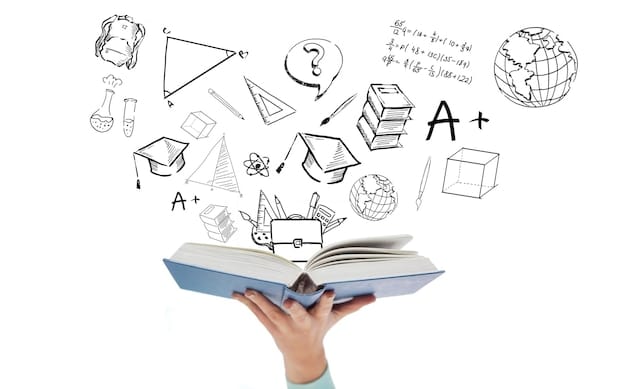
According to Tirthaji, these techniques were hidden in the form of 16 Sutras (aphorisms) and 13 sub-sutras in the Vedas. These formulas provide systematic approaches to solving complex mathematical problems in a simple and intuitive manner.
The 16 Sutras of Vedic Mathematics
The core of Vedic Mathematics lies in its 16 Sutras, which serve as mathematical shortcuts to solving problems efficiently. Some of the most commonly used Sutras include:
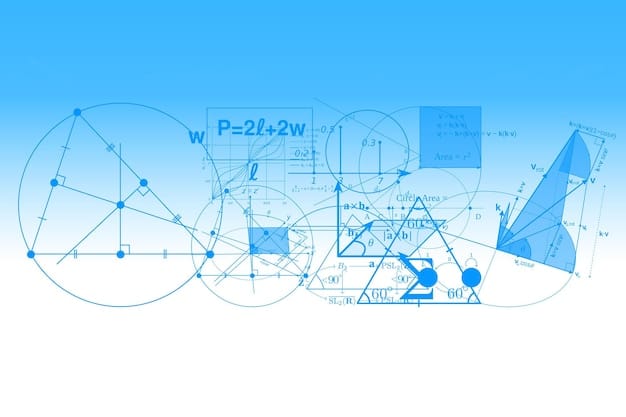
Ekadhikena Purvena (By one more than the previous one)
Nikhilam Navatashcaramam Dashatah (All from 9 and the last from 10)
Urdhva-Tiryagbhyam (Vertically and Crosswise)
Paravartya Yojayet (Transpose and adjust)
Sunyam Samyasamuccaye (When the sum is the same, that sum is zero)
Each product of the sum of these Sutras provides a unique method to simplify mathematical operations, making calculations faster and more intuitive.
Why Vedic Mathematics is Gaining Popularity
Vedic Mathematics has been recognized as an effective alternative to conventional mathematical techniques. Here are some reasons why it is gaining attention worldwide:
1. Simplifies Complex Calculations
One of the biggest advantages of Vedic Mathematics is its ability to simplify even the most complicated calculations.
2. Boosts Mental Math Skills
Since Vedic Maths relies on mental calculations, it strengthens cognitive abilities, improves memory, and enhances problem-solving skills. This makes it particularly useful for students preparing for competitive exams such as the SAT, GRE, and GMAT.
3. Increases Speed and Accuracy
Using Vedic Maths techniques, students can perform calculations in a fraction of the time it takes with conventional methods. This increased speed also improves accuracy, reducing the chances of mistakes in arithmetic and algebraic calculations.
4. Enhances Logical Thinking and Creativity
Unlike rote learning, Vedic Maths encourages students to understand the logic behind numbers, fostering a more analytical and creative approach to problem-solving.
6. Recommended by Experts and Leaders
In India, the significance of Vedic Mathematics was further highlighted when Prime Minister Narendra Modi mentioned it in his Mann Ki Baat address. He encouraged students to explore Vedic Maths to improve their problem-solving abilities and develop a love for numbers.
The Complete List of 16 Sutras of Vedic Maths: A Deep Dive into Ancient Mathematical Wisdom
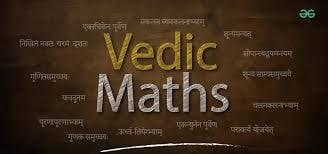
Vedic Mathematics is an ancient system of mathematical techniques that provides an intuitive, efficient, and highly effective way to solve complex problems. Rooted in the Vedas, this system is based on 16 Sutras (aphorisms) and their corollaries, offering a unique and holistic approach to calculations. Whether you're a student, teacher, or math enthusiast, understanding these Sutras can revolutionize your problem-solving skills.
1. Ekadhikena Purvena – "By one more than the previous one"
Application: This Sutra is primarily used for division and fraction problems. It instructs us to increment the preceding digit by only one digit for further calculations.
Example: Finding the square of numbers equal to the sum ending in 5:
252=2×(2+1)∣52=2×3∣25=62525^2 = 2 \times (2+1) | 5^2 = 2 \times 3 | 25 = 625
352=3×(3+1)∣52=3×4∣25=122535^2 = 3 \times (3+1) | 5^2 = 3 \times 4 | 25 = 1225
2. Nikhilam Navatashcaramam Dashatah – "All from 9 and last from 10"
Application: This is a powerful method for subtraction and multiplication using complements relative to a chosen base.
Example: Multiplication of numbers close to bases like 10, 100, or 1000:
97×9897 \times 98
9797 is 3 less than 100, and 9898 is 2 less.
Multiply deficiencies: 3×2=063 \times 2 = 06
Subtract crosswise: 97−2=9597 - 2 = 95
Answer: 9506
3. Urdhva-Tiryagbhyam – "Vertically and crosswise"
Application: A versatile multiplication technique applicable to all types of numbers.
Example: Multiplying 23 × 12:
Multiply vertically: 3×2=63 \times 2 = 6
Multiply crosswise and add: (2×2)+(3×1)=4+3=7(2 \times 2) + (3 \times 1) = 4 + 3 = 7
Multiply vertically: 2×1=22 \times 1 = 2
Answer: 276
4. Paraavartya Yojayet – "Transpose and adjust"
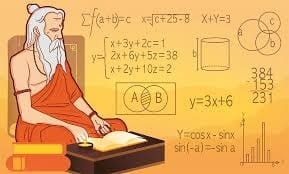
Application: Used for solving equations by reversing operations and making necessary adjustments.
Example: Solving 5x+3=235x + 3 = 23:
Transpose +3+3 to the other side: 5x=23−3=205x = 23 - 3 = 20
Divide by 5: x=4x = 4
5. Shunyam Saamyasamuccaye – "If the sum is the same, that sum is zero"
Application: This sutra simplifies and balances algebraic equations.
Example: Solving (x+2)−(x+2)=0(x+2) - (x+2) = 0, where terms cancel out, making calculations easier.
6. Anurupyena – "Proportionately"
Application: Used for solving problems involving ratios and proportions.
Example: Finding the missing term in 3:9::4:x3:9 :: 4:x:
x=9×43=12x = \frac{9 \times 4}{3} = 12
7. Sankalana-Vyavakalanabhyam – "By addition and by subtraction"
Application: This sutra helps solve equations by combining or subtracting parts of numbers.
Example:
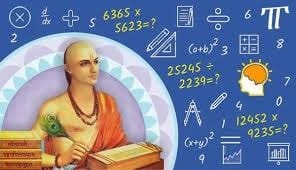
Finding the sum of a sequence using addition and subtraction techniques.
8. Puranapuranabyham – "By the completion or non-completion"
Application: Used in factorization techniques.
Example: Completing a number to the nearest base for simpler multiplication.
9. Chalana-Kalanabyham – "Differences and similarities"
Application: Used in calculus and differentiation to analyze changes.
Example: Deriving differentiation formulas using small change analysis.
10. Yaavadunam – "Whatever the extent of deficiency"
Application: Used for squaring numbers, especially those ending in 5.
Example:

952=(95+5)(95−5)+25=902595^2 = (95+5)(95-5) + 25 = 9025
11. Vyashtisamashti – "Part and whole"
Application: Focuses on breaking numbers into components for easier calculation.
Example: Breaking numbers for quick in addition and by subtraction or multiplication.
12. Shesanyankena Charamena – "Remainders by the last digit"
Application: A technique for quickly finding remainders in division.
Example:
Finding remainder of 23÷923 \div 9 using last digit calculations.
13. Sopaantyadvayamantyam – "The ultimate and twice the penultimate"
Application: Used to streamline algebraic computations.
14. Ekanyunena Purvena – "By one less than the previous one"
Application: Helps in identifying patterns and simplifying number sequences.
15. Gunitasamuccaya – "The product of the sum is the sum of the product"
Application: A multiplication trick to rearrange factors for easier calculation.
16. Gunakasamuccaya – "The factors of the sum are equal to the sum of the factors"
Application: Used in factorization challenges.
Vedic Maths Formulas Derived from the 16 Sutras
The Sutras of Vedic Mathematics are not just theoretical concepts—they translate into powerful formulas that simplify complex calculations. Here are some practical formulas derived from these Sutras:
Multiplication Formula (Urdhva-Tiryagbhyam): (a+b)×(c+d)=ac+(ad+bc)+bd(a + b) \times (c + d) = ac + (ad + bc) + bd
Squaring Formula (Yaavadunam): (x−1)2=x2−2x+1(x-1)^2 = x^2 - 2x + 1
Division Formula (Ekadhikena Purvena): 19=0.1111...\frac{1}{9} = 0.1111...
Factorization Formula (Puranapuranabyham): x2−5x+6=(x−2)(x−3)x^2 - 5x + 6 = (x-2)(x-3)
Vedic Mathematics vs. Traditional Mathematics
Feature | Vedic Mathematics | Traditional Mathematics |
|---|---|---|
Calculation Speed | Faster | Slower |
Complexity | Simplified | Detailed and lengthy |
Memory Requirement | Less (more mental calculations) | More (formulas and long steps) |
Application | Competitive exams, mental math | Academics, research-based math |
Creativity | Encourages multiple approaches | Linear and rigid approach |
Math Sutra Applications: Solving Problems Using Vedic Methods
Vedic Mathematics is not just a theoretical concept; it has real-world applications across multiple fields:
1. Competitive Exams
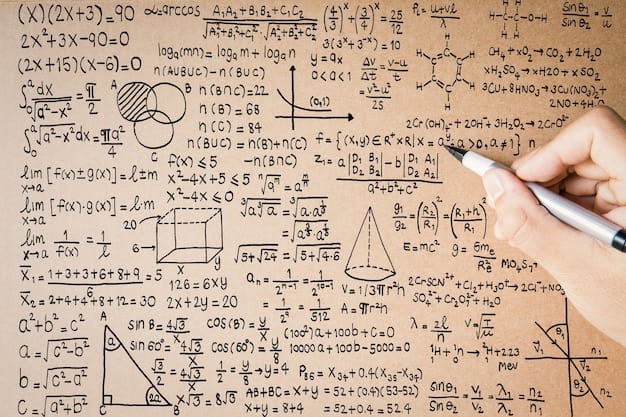
Students preparing for entrance exams like IIT-JEE, CAT, SAT, and GRE benefit immensely from Vedic Math techniques, which help them solve complex numerical problems quickly and accurately.
2. Banking and Finance
Professionals in banking and finance use Vedic Math shortcuts to perform swift calculations related to interest rates, loan approvals, and risk analysis.
3. Computer Science and Artificial Intelligence
Vedic Math principles are applied in computing algorithms, encryption techniques, and AI-based problem-solving models.
4. Engineering and Physics
Many engineering and physics-related calculations, including coordinate geometry and calculus, can be made easier using Vedic Mathematics.
5. Day-to-Day Life
From calculating grocery bills to planning budgets, Vedic Math techniques are useful in everyday calculations, making life easier for students and professionals alike.
How to Learn Vedic Mathematics
If you’re intrigued by the potential of Vedic Mathematics and want to start learning, here’s how:
Start with the Basics – Learn the 16 Sutras and their applications in arithmetic.
Practice Mental Math – Try solving simple multiplication and division problems without pen and paper.
Use Online Resources – Several online platforms and YouTube tutorials offer step-by-step guidance on Vedic Math.
Enroll in a Course – Many educational institutions now offer specialized courses in Vedic Mathematics.
Apply it Daily – Practice using Vedic Math in your everyday calculations to improve speed and accuracy.
Why Learn the 16 Sutras of Vedic Maths? Benefits and Applications
Vedic Mathematics, derived from ancient Indian scriptures, is a fascinating system of mathematics that simplifies complex mathematical problems using the 16 sutras of Vedic Maths. Developed by Shri Bharathi Krishna Tirthaji, this ancient system enhances problem-solving skills, fosters mental calculations, and provides intuitive techniques for quick numerical computations. Whether you are preparing for competitive exams or looking for efficient ways to solve mathematical arithmetics, learning Vedic Maths' sixteen sutras, can transform your approach to numbers.
The Power of the 16 Sutras of Vedic Maths
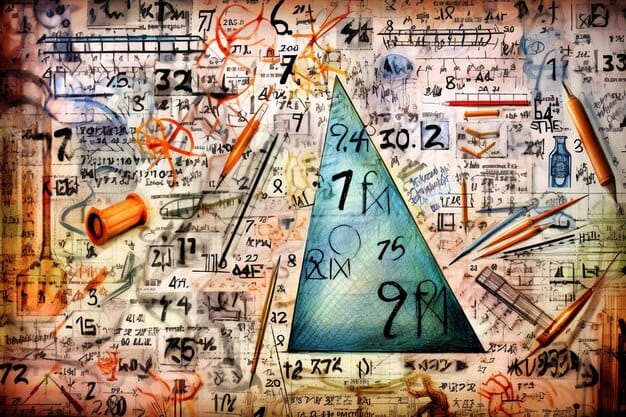
The sutras of Vedic Maths offer a structured way to tackle arithmetic, algebra, arithmetic algebra geometry calculus itself, and calculus. These sutras simplify complex problems, making them accessible to students, professionals, and enthusiasts alike. With methods like Ekadhikena Purvena (“by one more than equal to the sum of previous one”) and Nikhilam Navatashcaramam Dashatah (“all from 9 and last from 10”), Vedic Maths tricks enable faster calculations and boost mental calculation methods. These sutras are highly effective for solving problems related to multiplying numbers, square roots, and algebraic equations.
Benefits of Learning Vedic Mathematics
Enhanced Speed and Accuracy
The Vedic method reduces the number of steps needed for numerical calculations, allowing you to solve numerical computations quickly. This is especially useful for students appearing for banking exams, engineering entrance tests, and other competitive exams.Improved Problem-Solving Skills
Vedic sutras promote logical thinking and provide word formulae that simplify mathematical operations. For example, the sutra Ekadhikena Purvena helps in swiftly computing squares of numbers ending in 5, while Shunyam Saamyasamuccaye assists in solving algebraic equations with balanced terms.
Less Dependence on Calculators
With Vedic Maths formulas, you can perform mental calculations with ease, reducing the need for electronic devices. This strengthens memory and enhances cognitive abilities.Applicable in Advanced Mathematics
Whether it’s number theory, remainders by the last digit, or the factors of the sum, Vedic mathematics sutras extend to higher-level mathematical concepts, aiding in complex mathematical problems.Encourages Innovation
The ancient Indian mathematics system nurtures creativity in approaching problems, as techniques like vertically and crosswise multiplication introduce unconventional yet effective methods for computation.
Applications of Vedic Maths in Everyday Life
Quick Calculations: Useful for everyday numerical computations, budgeting, and business transactions.
Competitive Exams: Essential for solving mathematical arithmetics in time-bound tests like SAT, GMAT, and banking entrance exams.
Engineering and Science: Supports problem-solving in algebra, physics, and engineering disciplines.
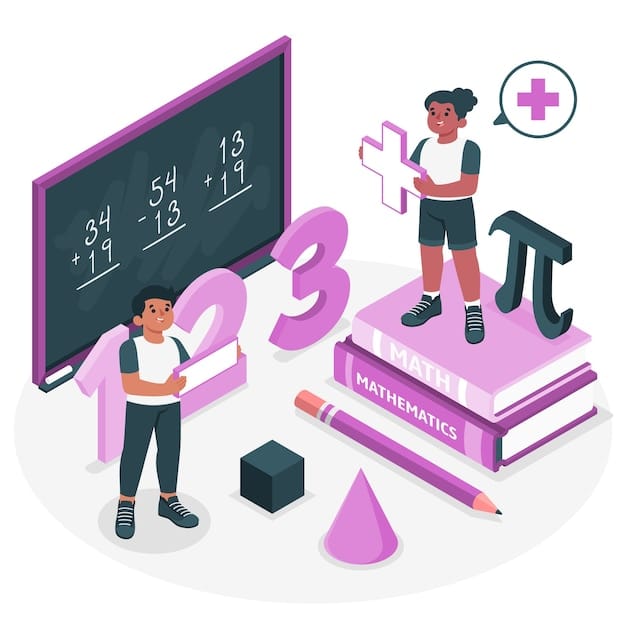
Final Thoughts: The Future of Vedic Mathematics
Vedic Mathematics is not just an ancient relic—it is a powerful tool that can revolutionize the way we approach numbers. With its ability to simplify complex problems, enhance logical reasoning, and improve computational speed, Vedic Maths is proving to be a game-changer in modern education.
As more students, educators, and professionals adopt these techniques, the future of mathematics education looks brighter than ever. Whether you’re a student looking to excel in competitive exams or a professional seeking faster ways to perform calculations, Vedic Mathematics offers a timeless and effective solution.So, are you ready to learn Vedic Maths and unlock a world of mental calculation methods? With platforms like Codeyoung, mastering these vedic sutras is easier than ever. Join us in this exciting journey and turn mathematics into your FAV subject!
With Codeyoung explore Vedic Maths and experience the joy of effortless calculations. Start applying these Sutras today and unlock a new dimension of mathematical thinking!
So, why not give it a try? You might just discover a new way to enjoy and excel in math!
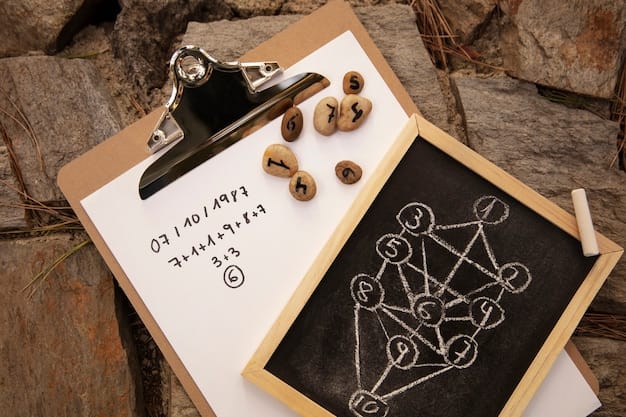
Vedic Maths Sutras - FAQs
This FAQ section addresses common questions regarding Vedic Maths Sutras, providing clear and concise answers that cover their definition, historical background, advanced applications, and their differences and similarities from conventional methods. This ensures readers quickly grasp the unique benefits and practical uses of these sutras.
What are Vedic Maths Sutras and how do they simplify calculations?
Vedic Maths Sutras are 16 ancient formulas designed to streamline complex arithmetic, algebra, and geometry. By breaking down lengthy calculations into simple logical steps, they enable rapid mental computation without relying on traditional, time-consuming methods.
Who is the father of Vedic Maths and what are his contributions?
Bharati Krishna Tirthaji is credited as the father of Vedic Maths. He revived these ancient techniques and developed methods that transform conventional arithmetic into intuitive, fast mental calculations, thereby significantly impacting modern math education.
What are some advanced mathematical problems solved using Vedic Maths Sutras?
Vedic Maths Sutras extend beyond basic calculations and are used to solve advanced algebraic equations, trigonometric problems, and even calculus-related challenges. They provide innovative strategies for factorization, pattern recognition, and efficient problem-solving in higher-level mathematics.
What is the significance of learning Vedic Maths formulas in modern education?
Mastering Vedic Maths formulas not only speeds up mental calculations but also strengthens a deeper understanding of mathematical concepts. These techniques work alongside traditional methods, giving students smarter, faster ways to solve problems. The result? More confidence, better efficiency in exams, and a newfound ease with everyday math challenges!
What is the difference between Vedic Maths Sutras and conventional mathematical methods?
Unlike conventional methods that follow lengthy, step-by-step procedures, Vedic Maths Sutras use intuitive shortcuts and mental arithmetic. This approach emphasizes pattern recognition and logical reasoning, offering faster solutions and a more holistic understanding of mathematical principles.
How do Vedic Maths subtraction techniques differ from traditional subtraction?
Vedic Maths uses smart tricks like "All from 9 and the last from 10" to make subtraction effortless. Instead of the usual borrowing method, it relies on complementary numbers, cutting down the steps and making mental calculations faster and more accurate.
What are the key benefits of learning Vedic Maths for school students?
Vedic Maths gives school students a real edge by sharpening their calculation speed, boosting memory, and strengthening logical thinking. These smart techniques not only build confidence but also make students less reliant on calculators—turning math from a dreaded subject into an exciting and enjoyable one!
How does Vedic Maths help in understanding algebraic expressions and equations?
Vedic Maths techniques break complex algebraic expressions into manageable parts, simplifying both factorization and equation solving. This approach not only speeds up calculations but also deepens students’ conceptual understanding, making advanced algebra more accessible.
Comments
Your comment has been submitted successfully!